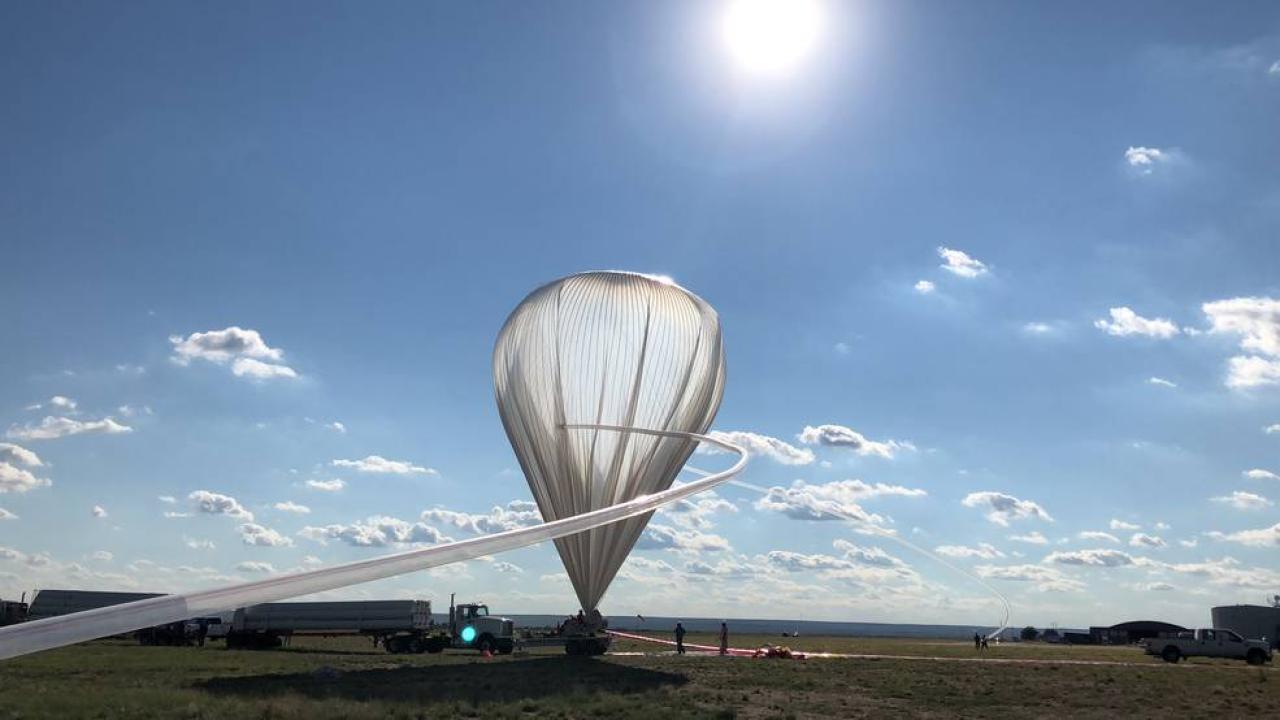
UC Davis Student Team Selected as Finalist for New NASA Balloon Challenge
A team of UC Davis students is one of six university teams that has been selected as finalists to advance to the next phase of NASA’s Formulate, Lift, Observe, And Testing; Data Recovery And Guided On-board Node (FLOATing DRAGON) Balloon Challenge. The UC Davis team, which is comprised of undergraduate students from the Department of Mechanical and Aerospace Engineering, is called HERMES, or High-altitude Experimental Rogallo Mission to Escort Safely.
“Being selected as a finalist for the NASA Wallops Flight Facility FLOATing DRAGON competition is an incredible opportunity for our team to showcase our skills and ideas and to represent UC Davis at the final flight test,” team leader Kelden Ben-Ora said. “It is extremely encouraging to have NASA believe in your designs and capabilities.”
The challenge, sponsored by NASA’s Balloon Program Office (BPO) at NASA’s Wallops Flight Facility and managed by the National Institute of Aerospace, was developed to provide increased opportunities for academic research institutions to contribute to the NASA Science Mission Directorate’s (SMD) mission.
Finalists were selected by a panel of NASA subject matter experts who reviewed each team’s Conceptual Design Review (CDR) package. In their CDRs, teams addressed feedback received from the judging panel on their previously submitted Preliminary Design Review (PDR) packages.
“What an exciting opportunity for UC Davis to work with NASA on this high-altitude flight experiment,” said faculty advisor and Professor of Mechanical and Aerospace Engineering Stephen Robinson. “Our student team has created a uniquely creative approach to a challenging problem and we are looking forward to flying very high this summer.”
Each finalist team will receive a hardware package and small stipend to offset costs associated with the development and construction of their proposed data recovery system concept. Over the next few months, they will work hand-in-hand with NASA engineers at Wallops to refine their designs to allow for the safe release and retrieval of crucial data collected during planned scientific balloon missions.
Because these balloon missions will collect massive amounts of telemetry data, NASA must find ways to safely drop multiple data vaults for recovery on the ground. Enter the FLOATing DRAGON finalists. The data vaults they are developing must have the capability to accurately target (and navigate to) a specific point on the ground in order to mitigate the risks associated with dropping objects from a balloon at a high altitude.
“This is no simple task,” said Dr. Sarah Roth, chief technologist of BPO. “In addition to mitigating the safety risks to the public, these teams must also construct nodes that will integrate into our existing systems and be able to withstand ever-changing harsh environmental conditions at such a high altitude in the atmosphere. The ideas proposed by the university teams are incredibly novel, and we are excited to see how their systems will perform.”
In addition to working collaboratively with NASA subject matter experts on a real-world problem, these university teams have high hopes for an actual flight test of their hardware. Upon successfully passing a rigorous mission review process, the plan is for finalist teams to conduct a test drop of their system in Ft. Sumner, New Mexico, in August 2023. The winner may have the opportunity to integrate their system in a future NASA mission.
“Our next steps will be to continue prototyping our aircraft and demonstrate that it will be able to fly to a safe landing spot successfully,” Ben-Ora said. “There are a lot of subsystems onboard that have to be tested and validated individually before we can test the system as a whole. There is lots to do and we are very excited to get our aircraft flying.”
The FLOATing DRAGON Balloon Challenge is sponsored by NASA’s Balloon Program Office at NASA’s Wallops Flight Facility and managed by the National Institute of Aerospace.
